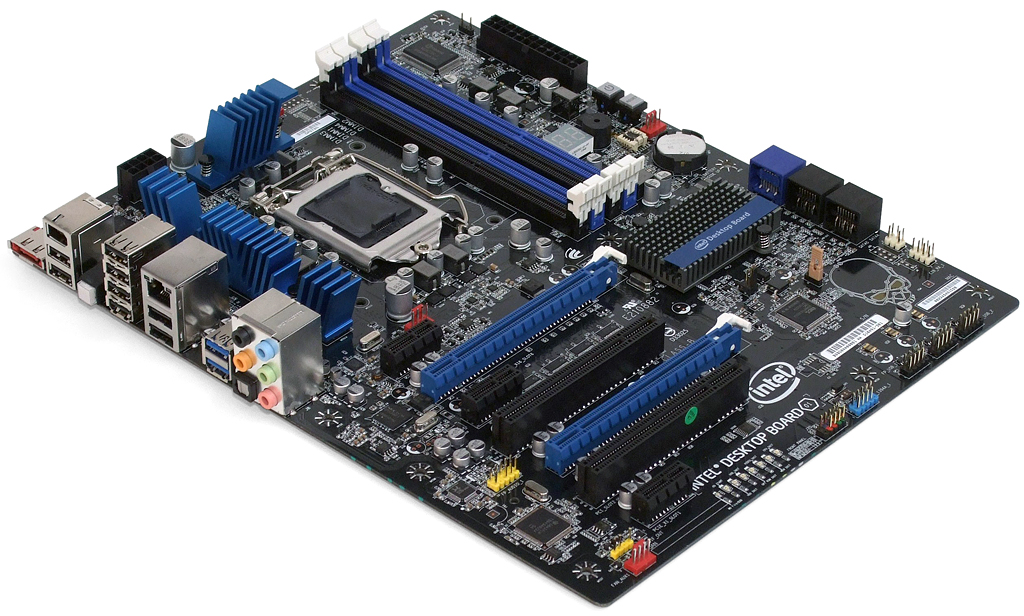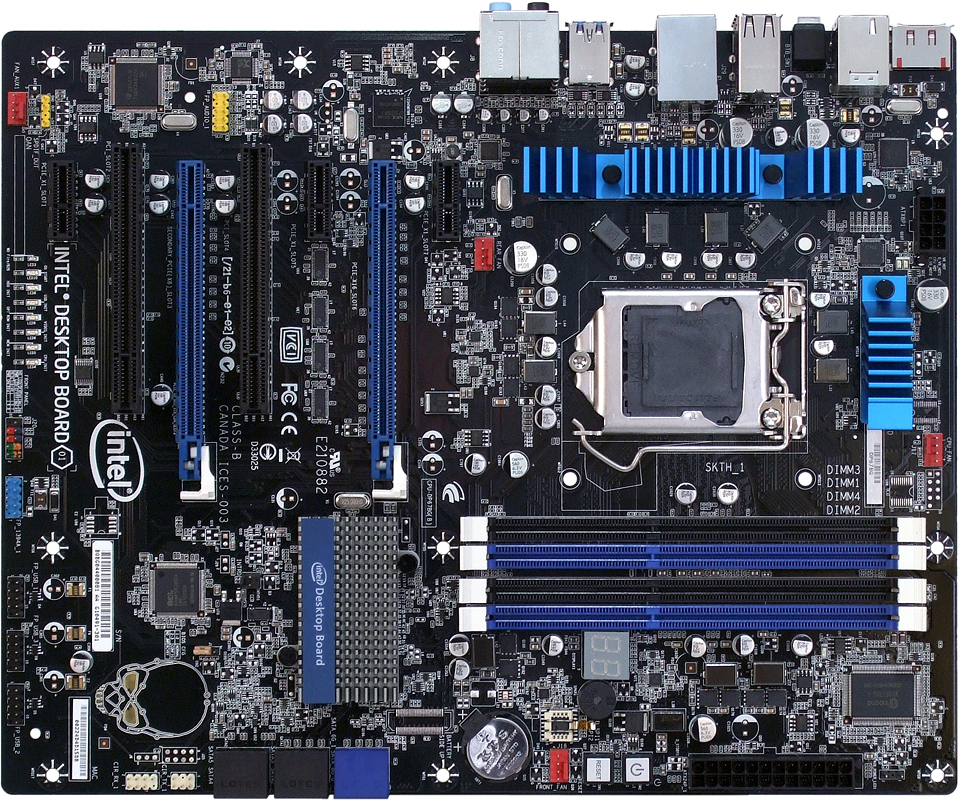P67 Motherboard Roundup: Nine $150-200 Boards
Improved per-clock performance and higher achievable frequencies are sure to put Intel’s latest K-Series CPUs on top of many builders’ whish lists, but they’ll still need a new socket to put it in. We test nine enthusiast-oriented LGA-1155 motherboards.
Intel DP67BG
Unique to Intel is the I/O panel’s “Back to BIOS” button, a feature that temporarily disables custom settings so that users can boot up and make changes. This feature takes away the need to “CLR_CMOS” after a boot failure, and even beats the boot failure prevention routines of most other brands by not losing any of your customizations.
A good overall layout begins with triple-slot spacing for graphics cards, allowing better airflow to the top card. The lower x16-length slot borrows eight lanes from the upper slot whenever a card is installed there, using automatic pathway switches to change from x16/x0 to x8/x8 modes. That good layout continues with a front-panel audio connector located above the lower graphics card slot, placing it closer to the ports it serves. Putting the Port 80 diagnostics display next to the DIMM slots finalizes a design where no important features are blocked by installed cards or the CPU cooler.
All of those features lend themselves to the development of a micro-ATX variant, as does the location of its SATA connectors. While using one basic design to serve two different markets might not seem very innovative, it actually facilitates the only product in today’s roundup that gets zero layout complaints.
Layout aside, we were perplexed by some of the board’s other features, or lack thereof. We were surprised, for example, not to find any front-panel USB 3.0 header, given that ASRock credited the company for this universal interface’s design. Conversely, we question the addition of IDT’s 89HMPEB383ZA PCIe-to-PCI bridge, along with two connected PCI slots and a FireWire controller, since it was Intel that felt legacy PCI was no longer worth integrating into the chipset.
Get Tom's Hardware's best news and in-depth reviews, straight to your inbox.
-
reprotected I thought that the ECS looked pretty sick, and it did perform alright. But unfortunately, it wasn't the best.Reply -
rantsky You guys rock! Thanks for the review!Reply
I'm just missing benchmarks like SATA/USB speeds etc. Please Tom's get those numbers for us! -
rmse17 Thanks for the prompt review of the boards! I would like to see any differences in quality of audio and networking components. For example, what chipsets are used for Audio in each board, how that affects sound quality. Same thing for network, which chipset is used for networking, and bandwidth benchmarks. If you guys make part 2 to the review, it would be nice to see those features, as I think that would be one more way these boards would differentiate themselves.Reply -
VVV850 Would have been good to know the bios version for the tested motherboards. Sorry if I double posted.Reply -
flabbergasted I'm going for the ASrock because I can use my socket 775 aftermarket cooler with it.Reply -
stasdm Do not see any board worth spending money on.Reply
1. SLI "support". Do not understand why end-user has to pay for mythical SLI "sertification" (all latest Intel chips support SLI by definition) and a SLI bridge coming with the board (at least 75% of end users would never need one). The bridge should come with NVIDIA cards (same as with AMD ones). Also, in x8/x8 PCIe configuration nearly all NVIDIA cards (exept for low-end ones) will loose at least 12% productivity - with top cards that is about $100 spent for nothing (AMD cards would not see that difference). So, If those cards are coming as SLI-"sertified" they have to be, in the worst case, equipped by NVIDIA NF200 chip (though, I would not recommend to by cards with this PCIe v.1.1 bridge). As even NVIDIA GF110 cards really need less than 1GB/s bandwidth (all other NVIDIA and AMD - less than 0.8GB/s)and secondary cards in SLI/CrossFire use no more than 1/4 of that, a normal PCIe v.2.0 switch (costing less than thrown away with x8/x8 SLI money) will nicely support three "Graphics only" x16 slots, fully-functional x8 slot and will provide bandwidth enough to support one PCIe v.2.0 x4 (or 4 x x1) slot(s)/device(s).
2. Do not understand the author euphoria of mass use of Marvell "SATA 6G" chips. The PCIe x1 chip might not be "SATA 6G" by definision, as it woud newer be able to provide more than 470GB/s (which is far from the standard 600GB/s) - so, I'd recommend to denote tham as 3G+ or 6G-. As it is shown in the upper section, there is enough bandwidth for real 6G solution (PCIe x8 LSISAS 2008 or x4 LSISAS 2004). Yes, will be a bit more expensive, but do not see the reason to have a palliative solutions on $200+ mobos.
-
I was hoping that the new Asus Sabertooth P67 would be included. Its new design really is leaving people wondering if the change is as good as they claim.Reply


